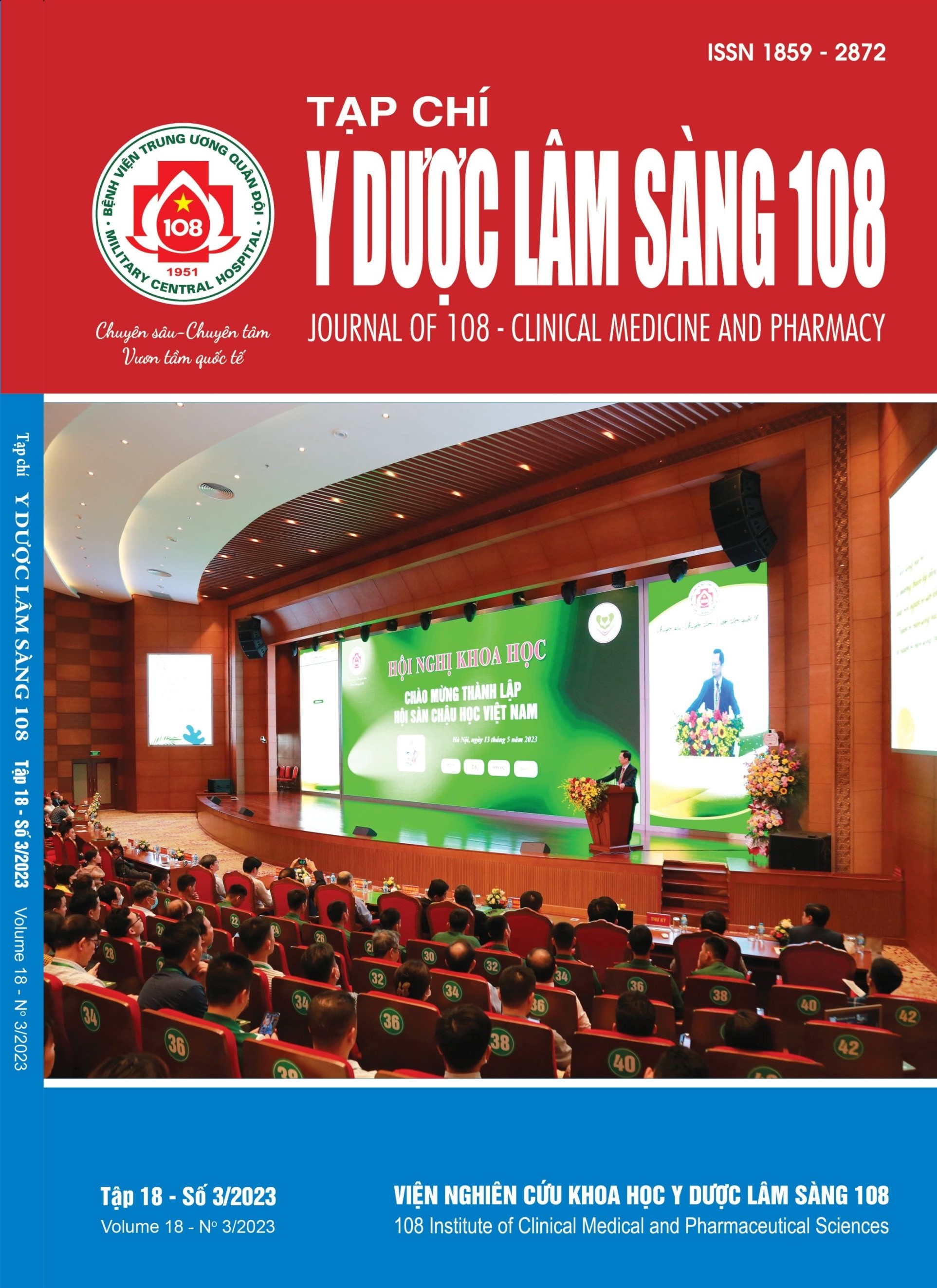Some charateristics and correlation of computed tomography scan and histology of chronic rhinosinusitis with polyp
Main Article Content
Keywords
Abstract
Objective: To describe the characteristics of chronic rihinosinusitis with polyp (CRSwP) on CT and evaluate the correlation between CT images and histopathology of CRSwP. Subject and method: A case-by-case study on 20 patients diagnosed with rhinosinusitis with nasal polyps at the Department of Otolaryngology, 103 Military Hospital from January 2022 to August 2011. Result: 20 patients with rhinosinusitis had polyps, on CT scan, polyps were found in the nasal cavity 13/20 (65%), polyps in the sinuses 4/20 (20%), polyps from the maxillary sinuses developed into the middle and posterior nasal passages 2/20 (10%). CRS with polyp causes bone changed in some cases with 7/20 (35%) thinning of the bone wall, 2/20 (10%). Maxillary sinusitis (100%). Lund-Mackay score: 5.65 ± 1.87. Eosinophil/HPF cell count 79.45 ± 117.47; thickness of mucosal epithelium 65.99 ± 37.4µm. Gland cells 76-100% accounted for the highest rate 65%; squamous metaplasia accounted for 35%; Continuous edematous stroma accounted for the highest rate of 50%; fibrous stroma accounted for 55%. The average level of inflammation accounted for the highest rate of 45%. Conclusion: Along with CT, histopathology provides the characteristics of the cells and stroma of the nasal cavity, which play an important role in diagnosis and treatment
Article Details
References
2. Soler ZM, Sauer D, Mace J et al (2010) Impact of mucosal eosinophilia and nasal polyposis on quality-of-life outcomes after sinus surgery. Otolaryngol Head Neck Surg 142(1): 64-71.
3. Ryan WR, Ramachandra T, Hwang PH (2011) Correlations between symptoms, nasal endoscopy, and in-office computed tomography in post-surgical chronic rhinosinusitis patients. Laryngoscope 121(3): 674-678.
4. Võ Thanh Quang (2004) Nghiên cứu chẩn đoán và điều trị viêm đa xoang mạn tính qua phẫu thuật nội soi chức năng mũi-xoang. Luận án Tiến sĩ Y học, Trường Đại học Y Hà Nội.
5. Amine M, Lininger L, Fargo KN, et al (2013) Outcomes of endoscopy and computed tomography in patients with chronic rhinosinusitis. Int Forum Allergy Rhinol 3(1): 73-79.
6. Bhattacharyya N, Fried MP (2003) The accuracy of computed tomography in the diagnosis of chronic rhinosinusitis. Laryngoscope 113(1): 125-129.
7. Aslan F, Altun E, Paksoy S et al (2017) Could Eosinophilia predict clinical severity in nasal polyps? Multidiscip Respir Med 12: 21.
8. Pokharel M, Karki S, Shrestha BL et al (2013) Correlations between symptoms, nasal endoscopy computed tomography and surgical findings in patients with chronic rhinosinusitis. Kathmandu Univ Med J (KUMJ) 11(43): 201-205.
9. Soler ZM, Sauer DA, Mace J et al (2009) Relationship between clinical measures and histopathologic findings in chronic rhinosinusitis. Otolaryngol Head Neck Surg 141(4): 454-461.
10. Raman Anish, Papagiannopoulos Peter, Kuhar Hannah N et al (2018) Histopathologic Features of Chronic Sinusitis Precipitated by Odontogenic Infection. American Journal of Rhinology & Allergy 33(2): 113-120.
 ISSN: 1859 - 2872
ISSN: 1859 - 2872
